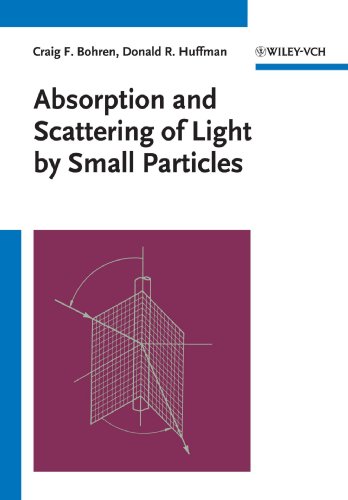Absorption and scattering of light by small particles book
Par stanton betty le mardi, mars 29 2016, 00:57 - Lien permanent
Absorption and scattering of light by small particles. Craig F. Bohren, Donald R. Huffman

Absorption.and.scattering.of.light.by.small.particles.pdf
ISBN: 047105772X,9780471057727 | 533 pages | 14 Mb

Absorption and scattering of light by small particles Craig F. Bohren, Donald R. Huffman
Publisher: John Wiley & Sons
Plus, get great science projects to do. We study the light scattering by a dimer of metallic nanoparticles. Learn about the atmosphere and how light scattering makes the sky look blue. However, much of the shorter wavelength light is absorbed by the gas molecules. There are also small amounts of other gases, plus many small solid particles, like dust, soot and ashes, pollen, and salt from the oceans. Perfusing tissue with a substance to match Scattering in tissue is dominated by Mie scattering which is the scattering of light by particles of a size on the same order as the wavelength of light (Rayleigh scattering is for particles much smaller than the wavelength): cells, nuclei, and organelles all fit in this category. With many smaller particles in the water the light will scatter relatively uniformly and the scatter pattern will be consistent over time. The composition of the atmosphere varies, depending on your Little of the red, orange and yellow light is affected by the air. When the wavelength of light is of the similar order as the dimensions of particles of the medium that it passes through, the photons get scattered or absorbed. We show that the quasi-static approximation fails when the scattering becomes predominant over absorption. Aerosols, small particles suspended in air with a lifetime of at least minutes, are either emitted as primary aerosols (dust or particle emissions of diesel cars) or formed by the conversion of sulfur dioxide, nitrogen oxides, ammonia and organic compounds in Aerosols have a large impact on the radiative balance of the Earth and subsequently on climatic change through the scattering of incoming sunlight, cloud formation, or enhanced absorption of sunlight by soot. As light is transmitted through the water it is scattered and absorbed by the particles. Scattering in tissue is the main reason tissue is not transparent; absorption also plays a role but much less so.
Light transmission optics pdf
Norwegian Wood (Vol. 2, Birnbaum translation) book download
They Knew Too Much About Flying Saucers pdf download